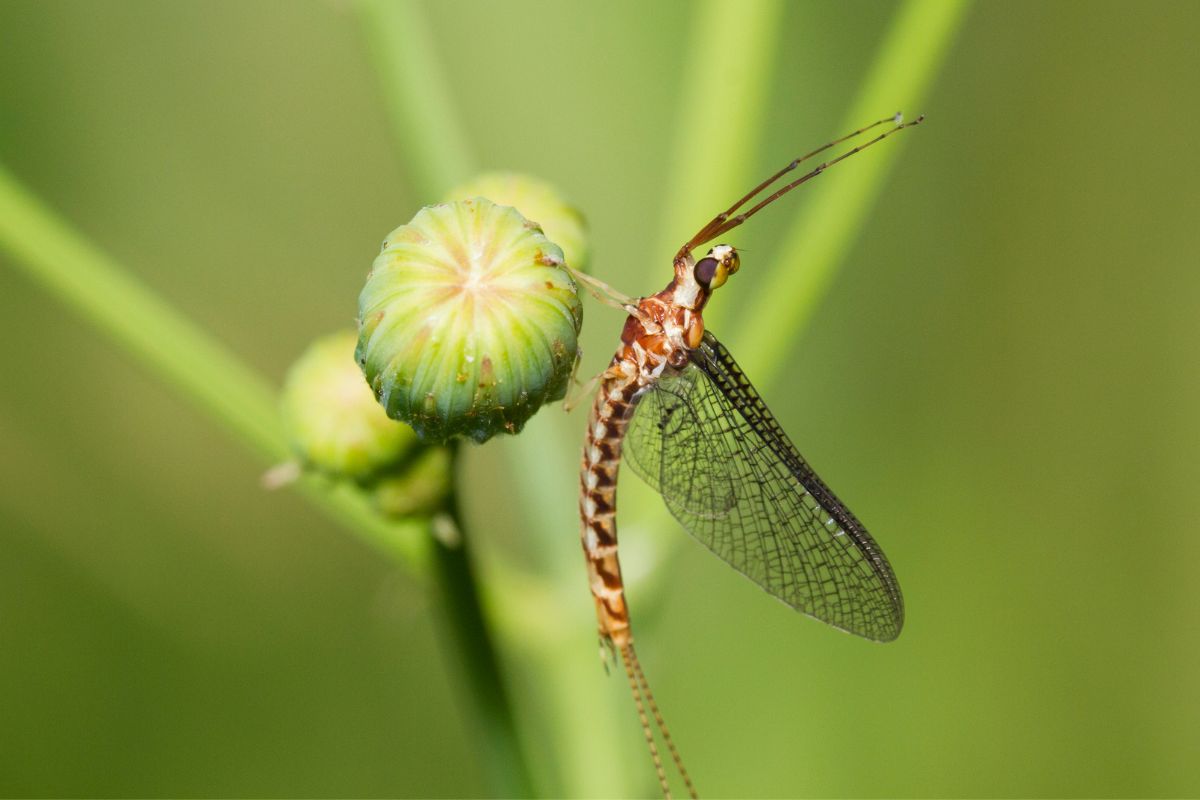
The mayfly is an insect that is often confused with many other insects, such as the mosquito, the midge, and the common crane fly. When you are dealing with pests around the home or garden, it’s helpful to know which insect is which, so that you know what pesky issue you are dealing with. The mayfly is known to have an extremely short lifespan and it likes water habitats but will find land or vegetation to lay eggs and produce its life cycle.
Unlike mosquitoes or other winged pests, they do not bite or sting but can just be annoying. The mayfly is a winged insect that has large eyes, antennae, and wings that are triangle in shape with small round wings on the back. The wings stand upright like those on a butterfly.
The insect is approximately one-tenth of an inch long but can grow much longer, and survives for less than a day in most cases, after a two-week hatch cycle. Learn more about the many insects similar to a mayfly here.
1. The midge isn’t as nasty as you might think, but it can be hard to recognize
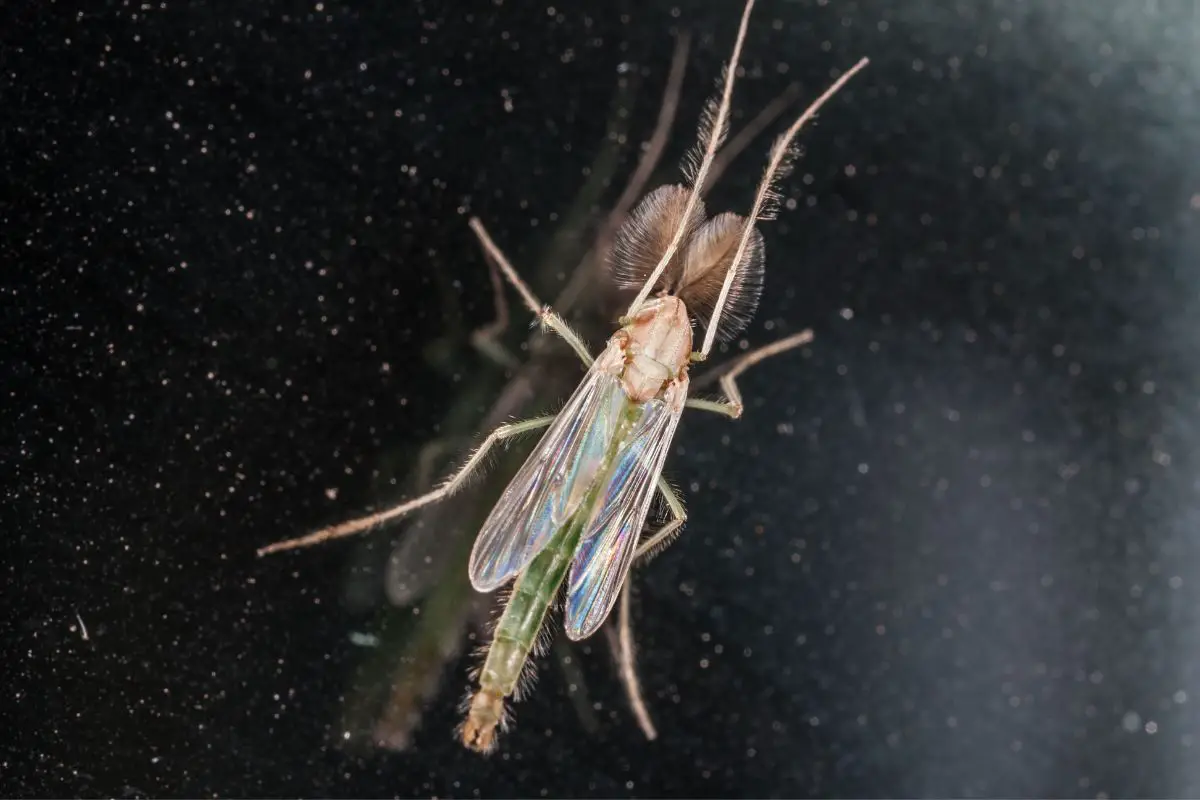
Like the mayfly, the midge does not want to feed off of humans and it looks very much like the mayfly. It is a brown insect with wings, and its size can range from one-tenth of an inch to half an inch. The midge is a little smaller than a mosquito by comparison, but not as annoying and darker in color, and has the same life cycle of a mayfly, lasting only one or two days after it is hatched.
This insect likes the same locations as the mayfly and will enjoy some wetlands or vegetation. It does not have a needle or teeth and can not bite or sting the same way other flying insects can. This is also not a bug that will fly alone but arrives in swarms which will be its most annoying feature.
2. The crane fly is almost exclusively a plant-eater and looks much like the mayfly
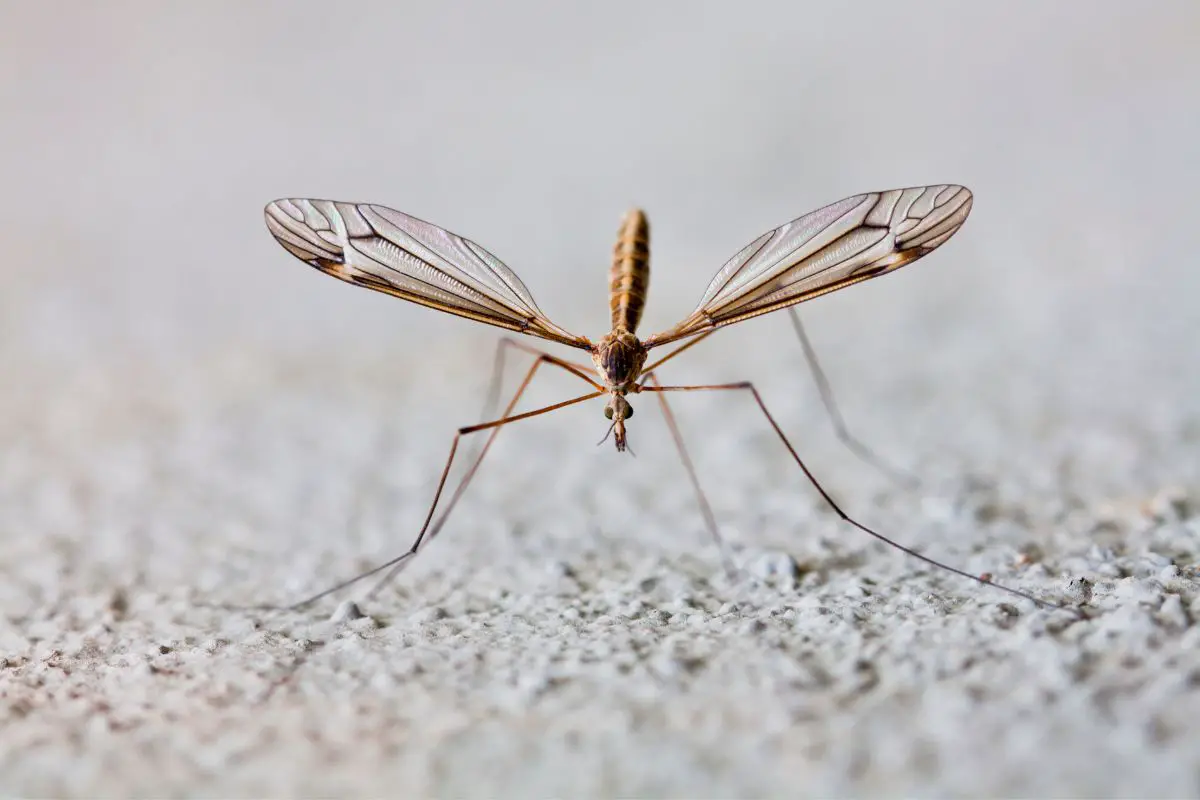
The crane fly looks very much like a mayfly, and also somewhat like a mosquito. It has a long dark body that is approximately one-tenth to one-half an inch long and can be much longer than that, even over one inch in length. Also, like the mayfly, the crane fly also does not have a needle or stinger, so it will not bite or sting and can not harm or carry disease to humans or animals.
The crane fly likes wetlands and will also feed off of decaying objects. These are not predators but will be annoying. They are going to like porch lights and their eggs will be laid in plant roots.
The life cycle from egg-laying to the end for the crane fly is approximately two weeks, about the same as the mayfly.
3. The gnat is an annoying thing, but it won’t be around to bother you for long
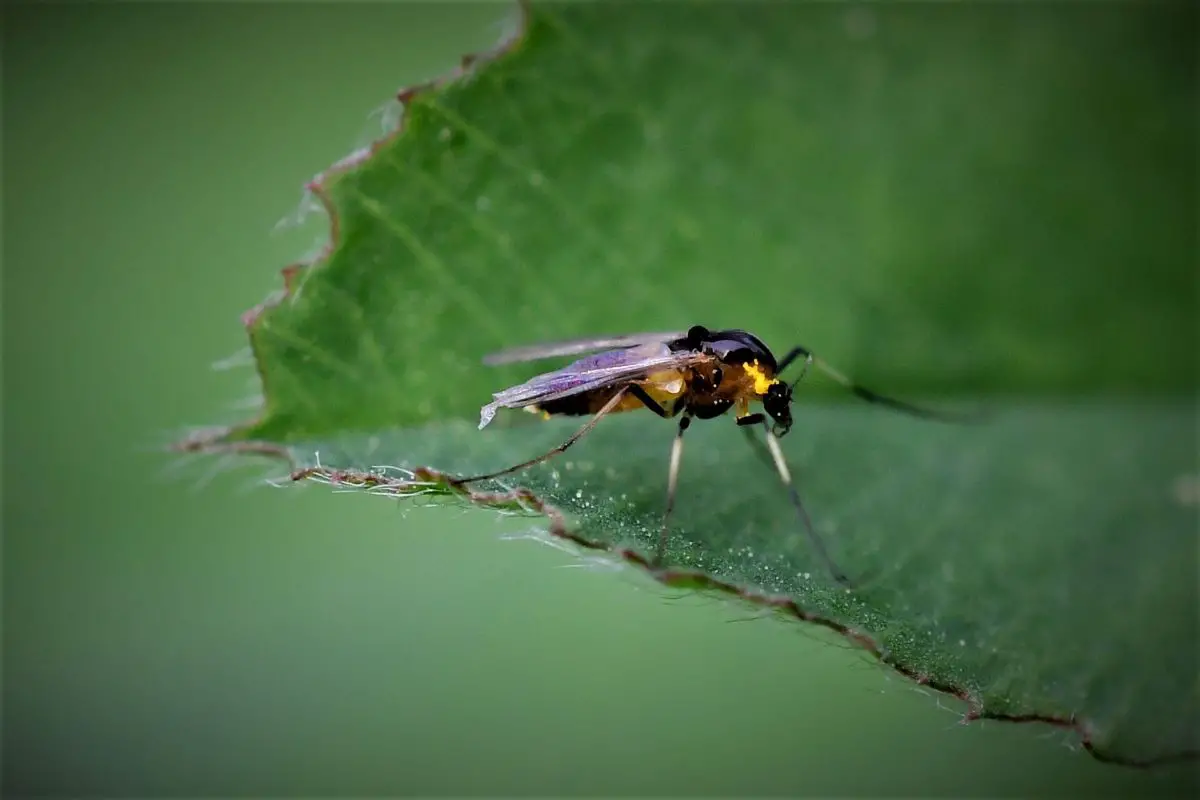
The gnat is an annoying thing and it can feel like you will never see them go. However, their life cycle is slightly longer than the mayflies, with approximately 28 days in total from egg laying to their end. Unlike the mayflies, the crane fly will feast exclusively on plant life.
When the crane fly lands its tail will raise, and you may notice a difference here between the crane fly and the mayfly. Their bodies are also much smaller, and they can be barely noticeable. The crane fly does not bite or sting and will not bother humans or animals in the way of bites or problems.
This animal also moves in swarms.
4. The mosquito is a bug that is easy to recognize, and hard to get away
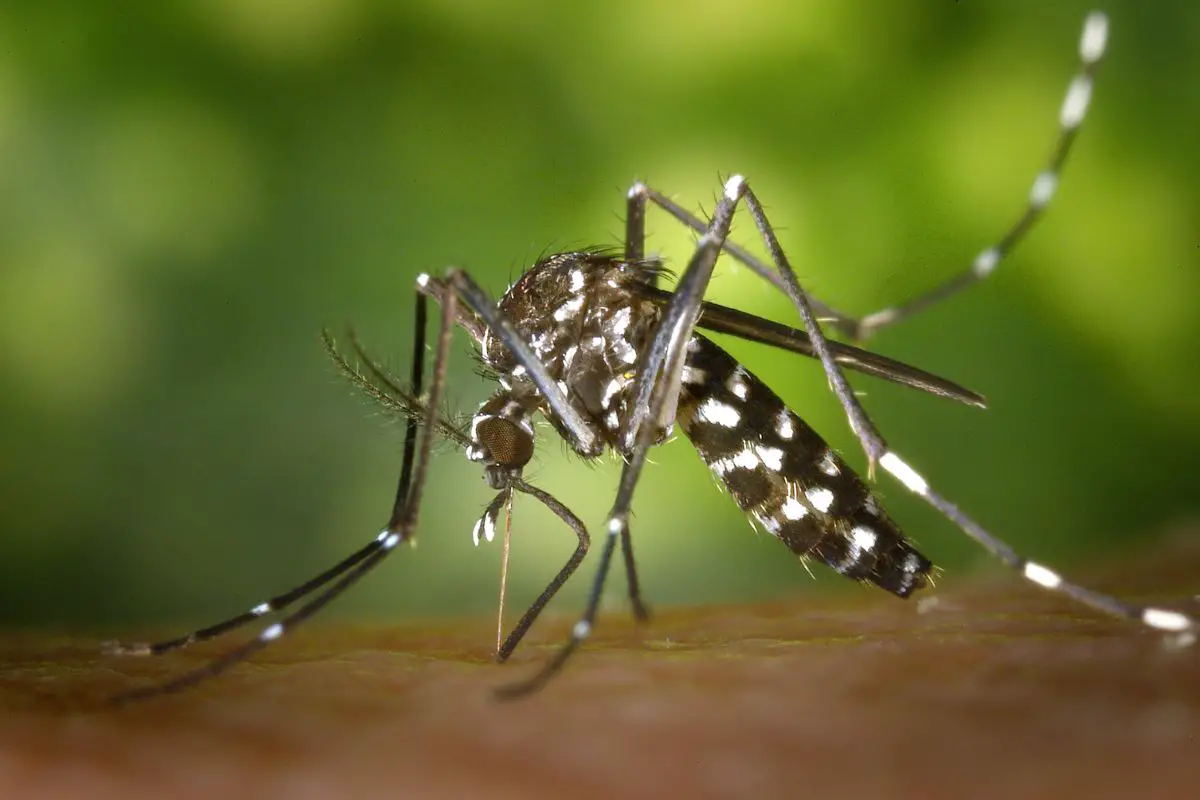
The common mosquito is an annoying thing for some, and a fatal hazard for others, causing health problems that can lead to death in hundreds of thousands of people in the world every year. This is a key difference between the mosquito and the mayfly, although as small, brown-winged creatures, they look very similar. The mosquito has a brown body and a needle it uses to feed from humans and animals.
Unlike the mayfly, it travels alone, but its life cycle is not any longer than one or two days.
5. Stoneflies have a unique anatomical structure but are overall harmless
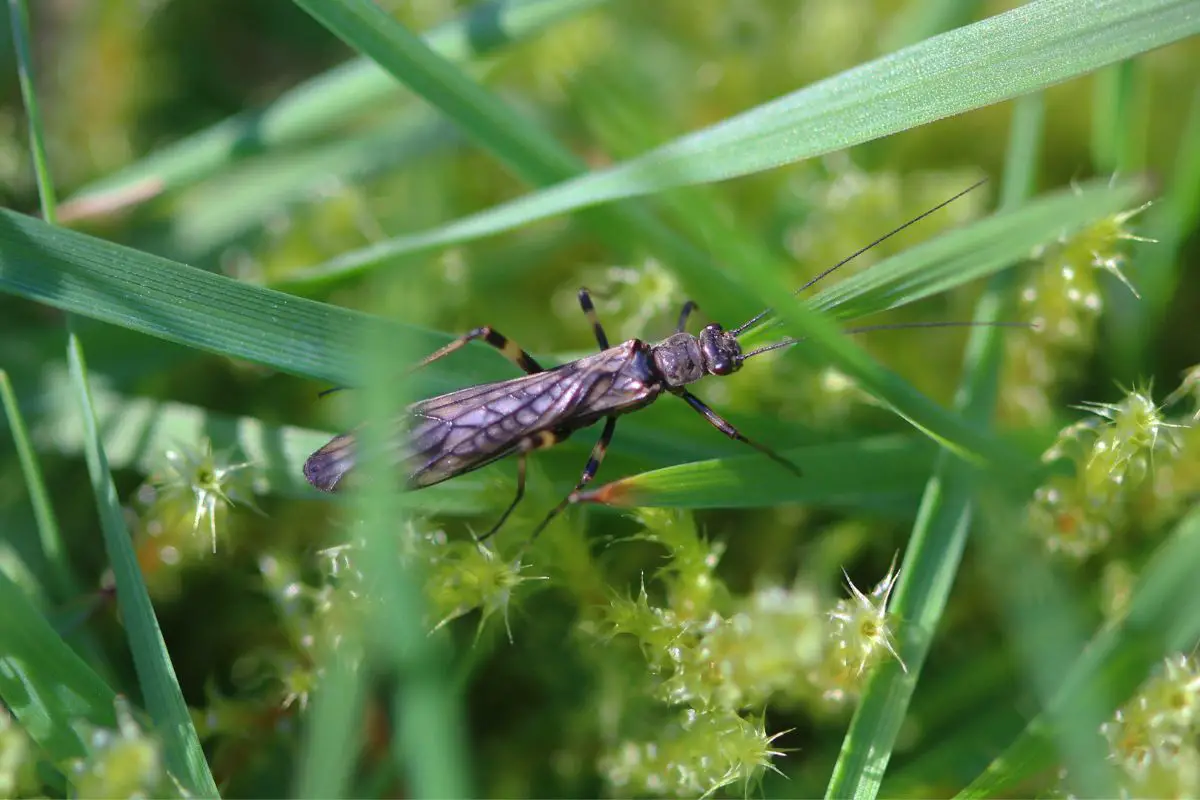
The stonefly is a fly that is much like a mayfly in appearance, but it has a unique gill structure for breathing that differentiates it from the mayfly. Its size will vary and can be one-quarter an inch to almost three inches, and it looks almost like a cross between a mayfly and an ordinary house fly, but brown. The stonefly like the mayfly is a harmless creature, and will not carry disease or cause bites or stings.
Their gill structure allows for water habitation but they can also survive on land.
6. The dance fly is named for its pretty prance in the air and is harmless overall
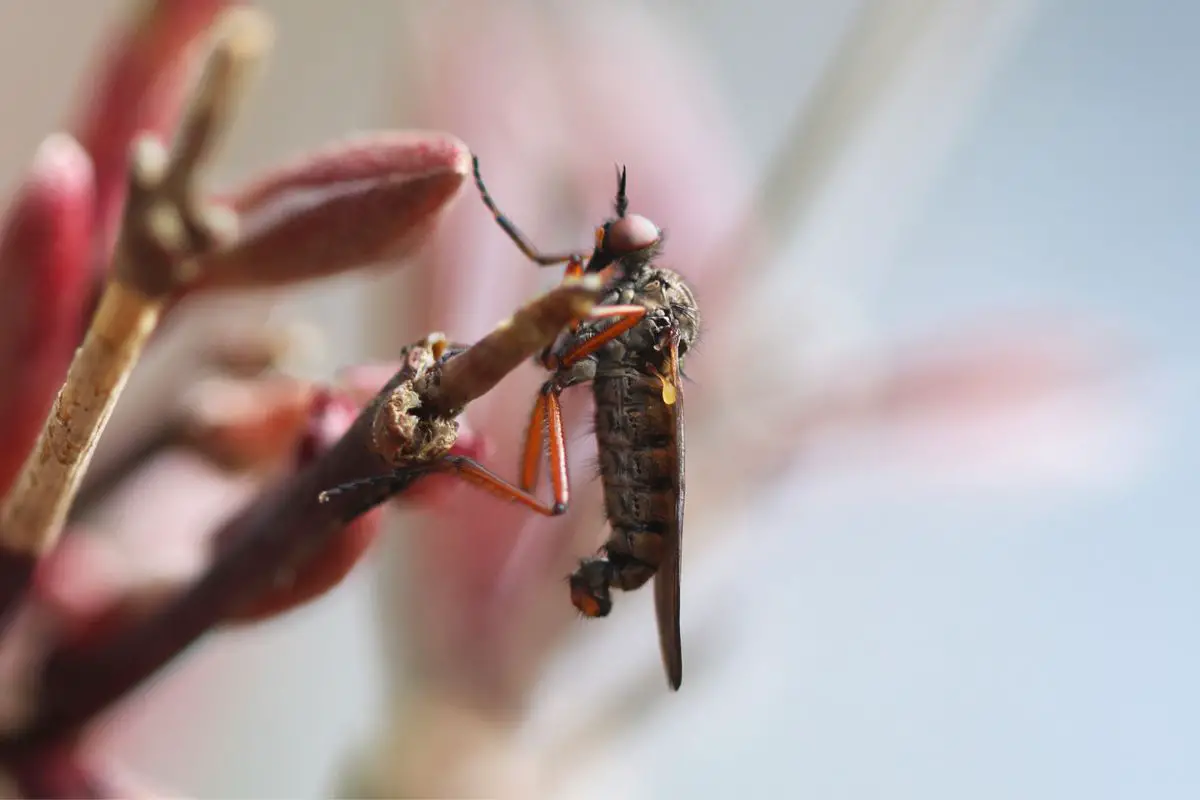
The dance fly is another insect that looks like a cross between the common house fly and the mayfly. It is small in appearance and approximately the same size as the mayfly, at just over one-half an inch at its greatest size. It also has a similar life cycle and can last as long as two weeks.
This is not a harmful bug, and, like the mayfly will travel in swarms. To mate and start the life cycle, the male will provide a dead animal or fly to the female as his way of signaling he is ready to couple up and begin laying eggs.
7. Fleas are commonly confused with many insects, and mayflies are no different
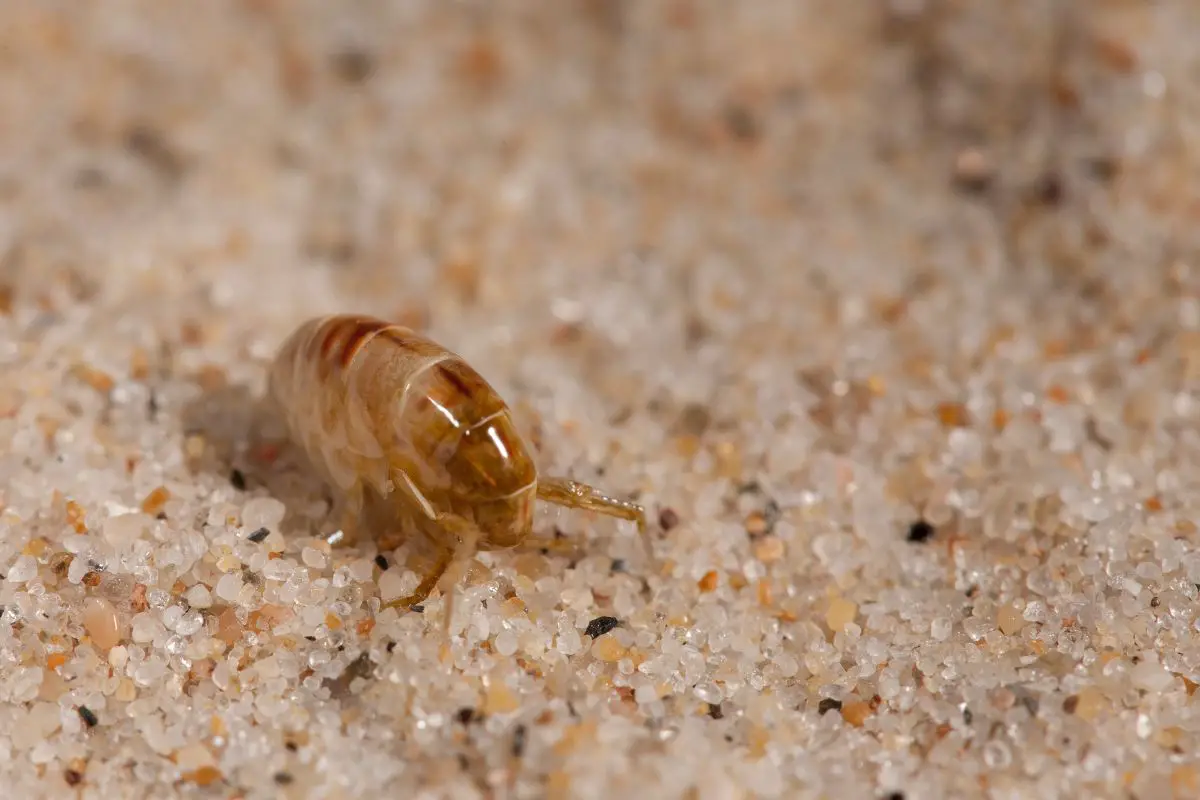
Fleas and mayflies don’t necessarily look the same, but both insects are equally annoying. A mayfly has longer legs and a more obvious abdomen and thorax, whereas a flea is much smaller in size. Another key difference between the two is that the flea will bite and feeds on carnivores like animals and humans, and this can cause disease and harm to the animals in question.
The flea is overall much smaller than the mayfly and will look more like a spot where it lands, while a mayfly appears like a flying insect that is easier to recognize.
8. Owl midges are another winged creature that is harmless, but annoying
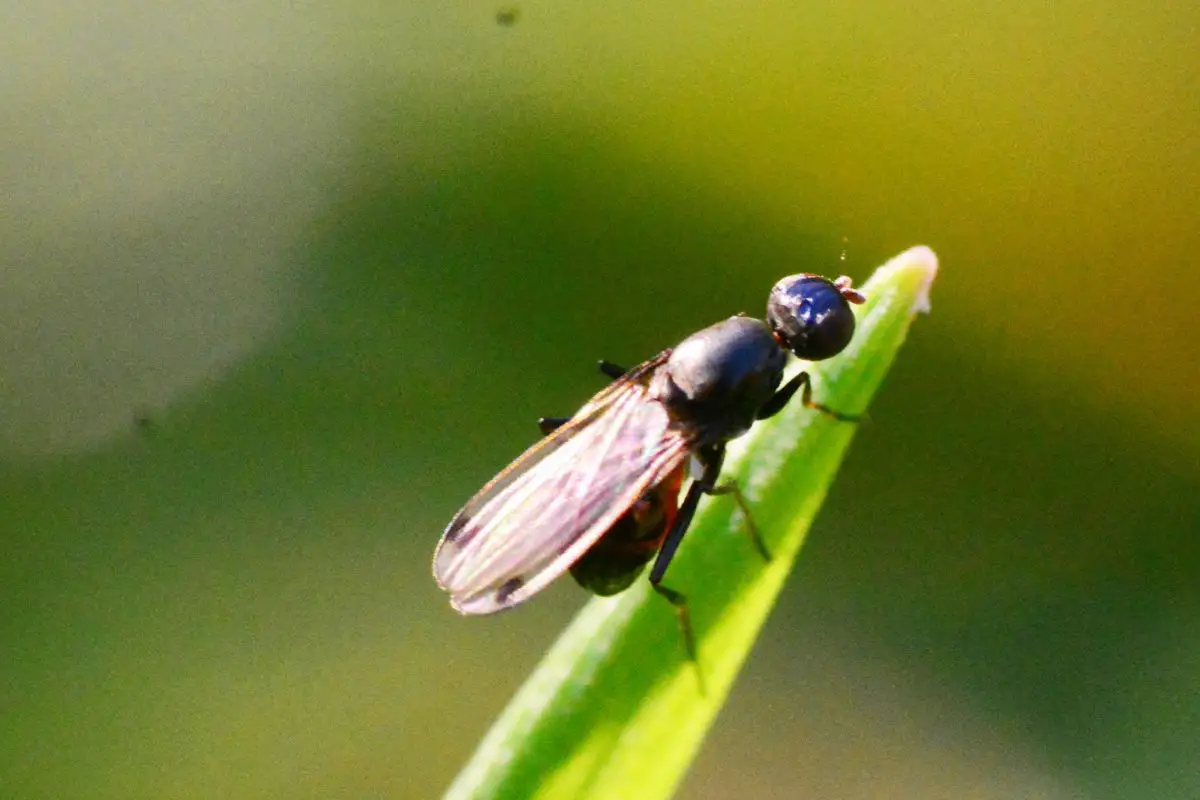
Owl midges are much like dixid midges in that they are as harmless as the mayfly. The life cycle of the owl midge is much the same as well, and it will not last longer than a day. Owl midges love the water, and this is where they will feed the most.
They do fly in swarms as well, and can really bother humans and animals by flying in and around their faces. The owl midge is approximately a size that is between the size of a flea and the size of a mosquito, and is sometimes easier to recognize that way.
9. The American ermine moth is a sight to behold and mesmerizing if you catch one
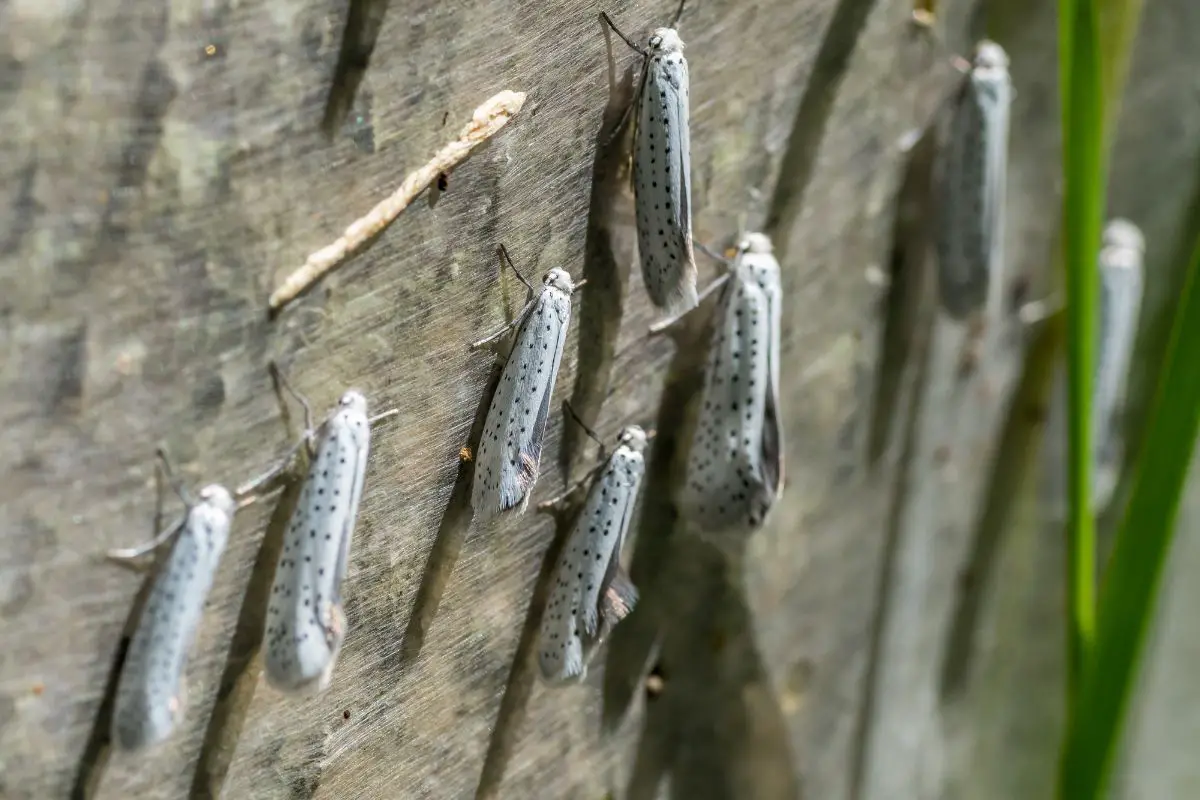
The American ermine moth is small when it comes to moth sizes and as such it compares with the mayfly in some respect. Its appearance, however, is distinctly different, as it is white with black dots and this is how you can recognize it. Like the mayfly, it does have hind wings and also like the mayfly, it is harmless when it comes to biting and stinging.
This insect is slightly larger as it can be over one inch long and even over two inches in some areas. It likes water life and water food and its life cycle reach past two or three days after a long nymph and caterpillar stage.
10. The fruit fly feeds on plant vegetation but its shelf life is even shorter
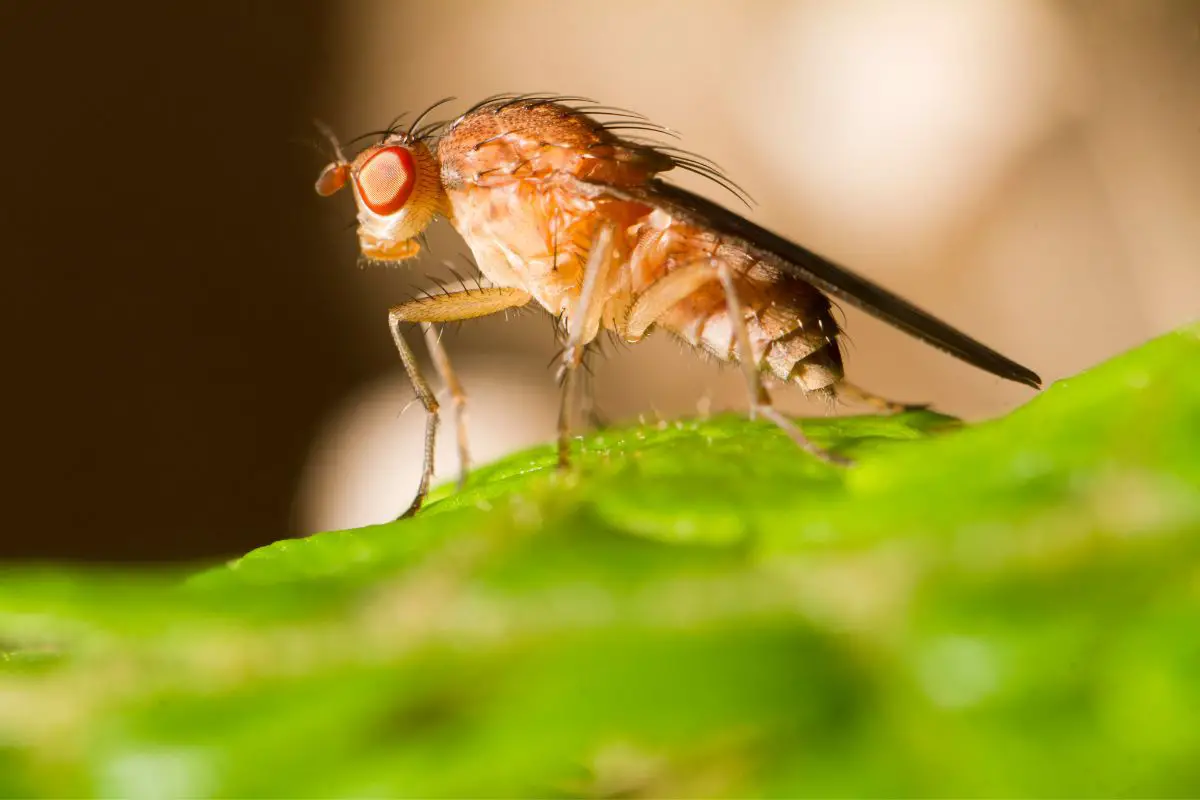
The common fruit fly is a pest indeed, and it can be very hard to get rid of. It looks much like the mayfly, but is much smaller at just one-tenth of an inch long, and sometimes even smaller than that. Its life cycle is approximately the same, and it will not last more than a day.
It does, however, lay eggs quickly, and can feast off decaying fruit laying eggs for its larvae to continue doing the same. This is a bug that will appear in swarms as well. Because the fly is so small, it can be very difficult to determine what kind of fly it is, if you do not have fruit around for it to feed on.
It is both an indoor and outdoor insect. The male is a little easier to spot as it is darker in color than the female, who appears brown whereas the male appears black. Also, unlike the mayfly, small spikes appear at the top of the male and these are used for mating purposes.
The common fruit fly hates light, and this may be one way to get rid of it.
11. The drain fly or sewer gnat looks like the tiniest moth you ever saw
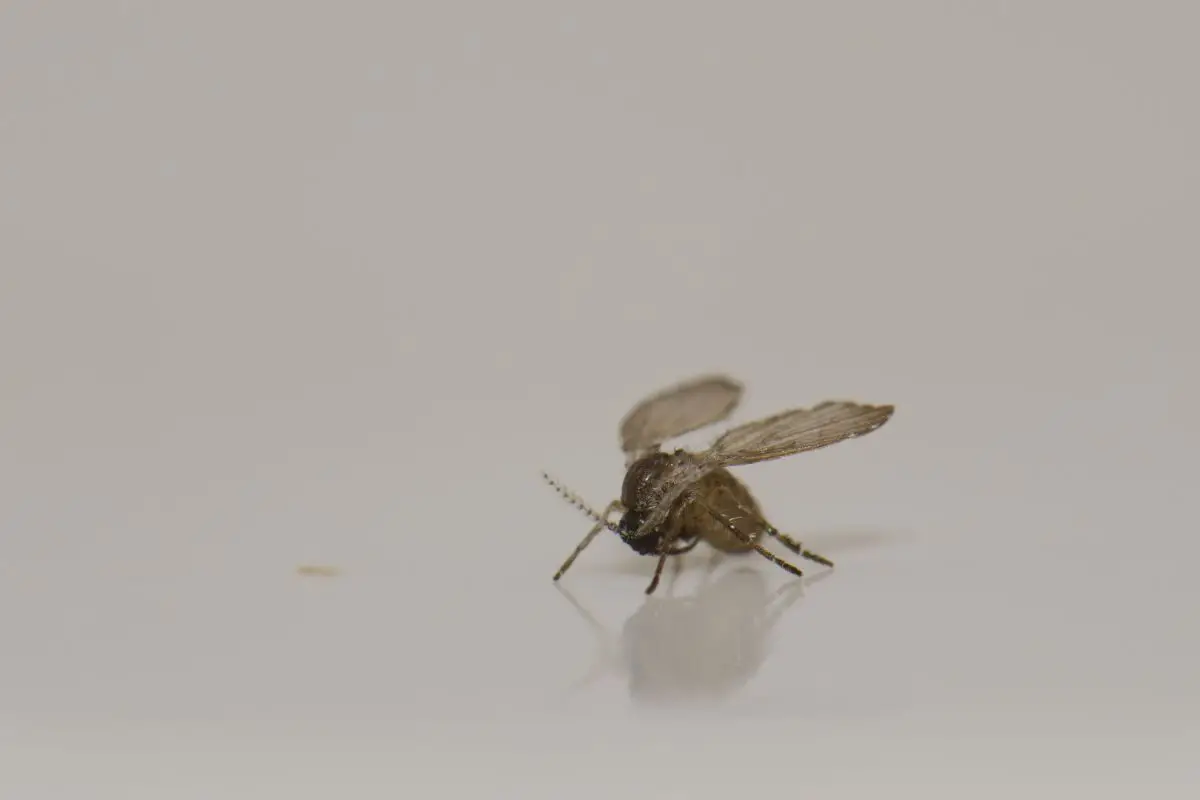
The drain fly is also known as the sewer gnat or sewer fly, and can also be called the sink fly. It has the same body that a mayfly has, and it can be mistaken for one, but it typically lives in the drains of sinks or sewers. It is the same size as the mayfly and is approximately one-tenth of an inch in size.
Unlike the mayfly, it likes the night better than the day and will pervade your sinks and drains when you aren’t looking. The drain fly has a short and hairy body that is not like the mayfly, and it also has wings that look like a moth. It may like the taste of blood, so it can be dangerous to humans and animals, but it isn’t a significant health threat.
They usually are not much more than an annoyance that is difficult to make go away. Their life cycle is only a day or two long, but they will lay eggs in the drains and pipes of the sinks they are in making their nuisance that much more difficult to remove.
12. The blowfly is like the common house fly but has a metallic appearance and can be harmful
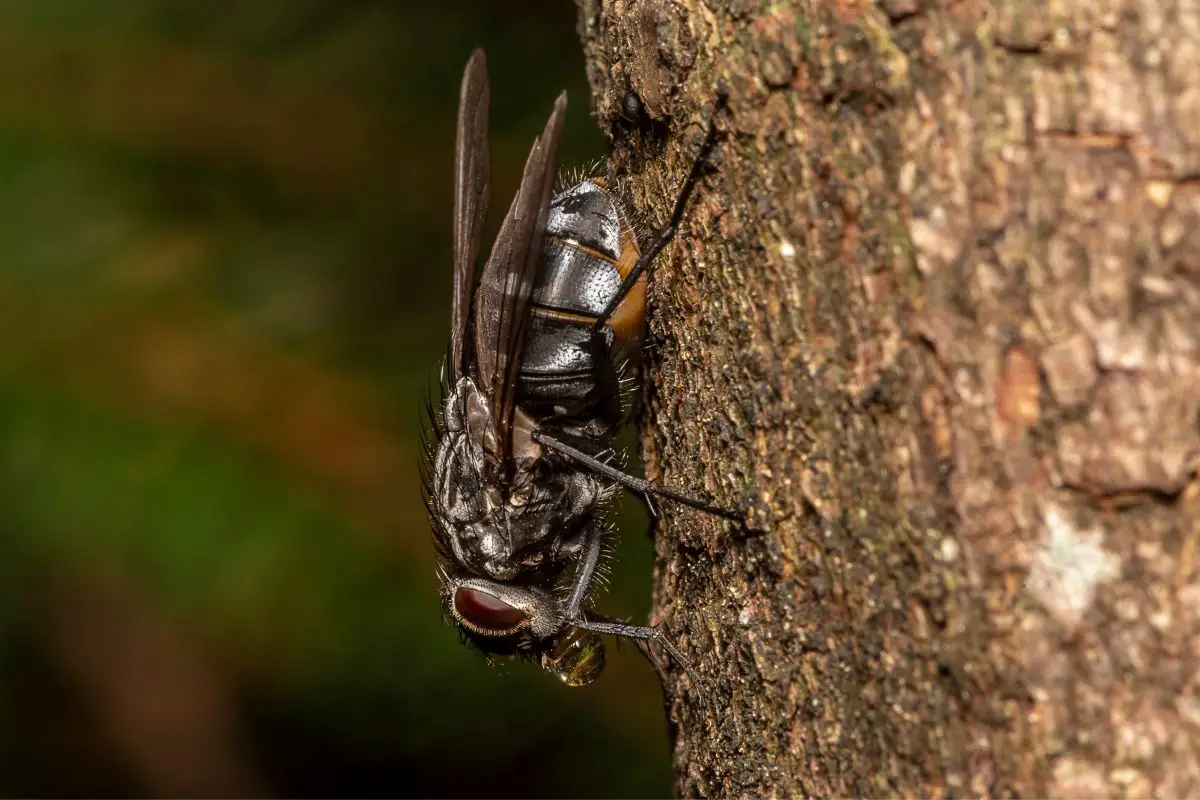
The blowfly is different from the mayfly in appearance, as it is black with a metallic sheen to it, and is sometimes called a bluebottle or greenbottle fly, as it has the sheen of a bottle of coke or other soda bottle. If one is not familiar with the appearance of a mayfly, it might be confused with one, but this is a fly that is close to the common house fly. The blowfly likes decaying vegetation or life, so if you see them, you may want to look around and see what they are feeding on.
There could be a dead animal in the garden or home, like a mouse or other rodent that you haven’t previously been aware of. Unattended garbage is going to be home to the eggs and larvae of the blowfly as well. Its life cycle is less than three days, but it lays eggs very quickly and can cause disease if the problem is not taken care of.
It has been called the blowfly in literary works and was frequently used by Shakespeare in work such as The Tempest and Antony and Cleopatra, work that has helped it to earn its common name.
13. The whitefly is a beautiful white moth that will not bother anybody
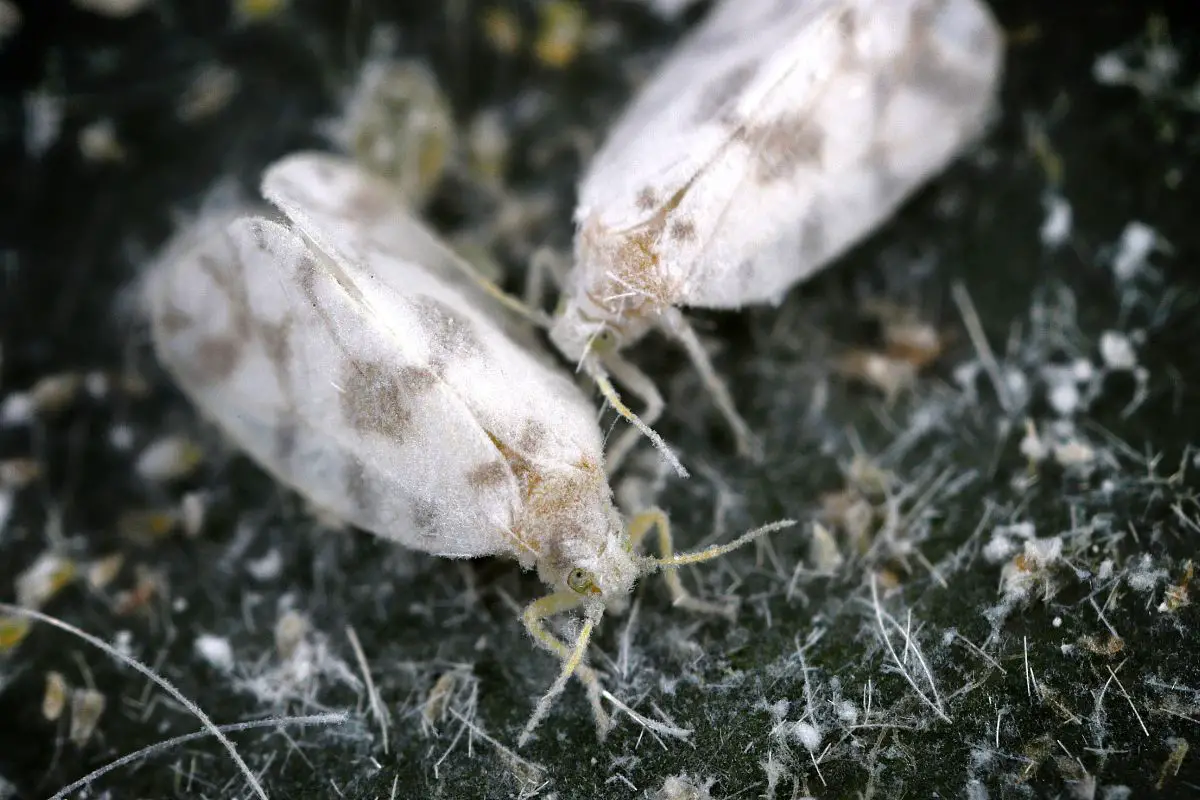
The whitefly is exactly what it sounds like, a fly or moth that is almost exclusively white in appearance. In this respect, it is much different in appearance than the mayfly. Otherwise, it is approximately the same size and is so small at just over one-half an inch that if you don’t see it up close, it will be difficult to determine its color, and what it is.
It travels alone, but lays eggs quickly and will work in swarms on plant vegetation for food when it wants to. The whitefly is not a carnivore but will suck from plants and stems of plants if it can find some good ones. It is not harmful to humans but can inject its own saliva into plants and cause a problem with vegetation.
It is difficult to control them around plants, as even mesh or screens will not be a problem for them to get through.
14. The dragonfly is a beautiful mythical creature with more color than the mayfly
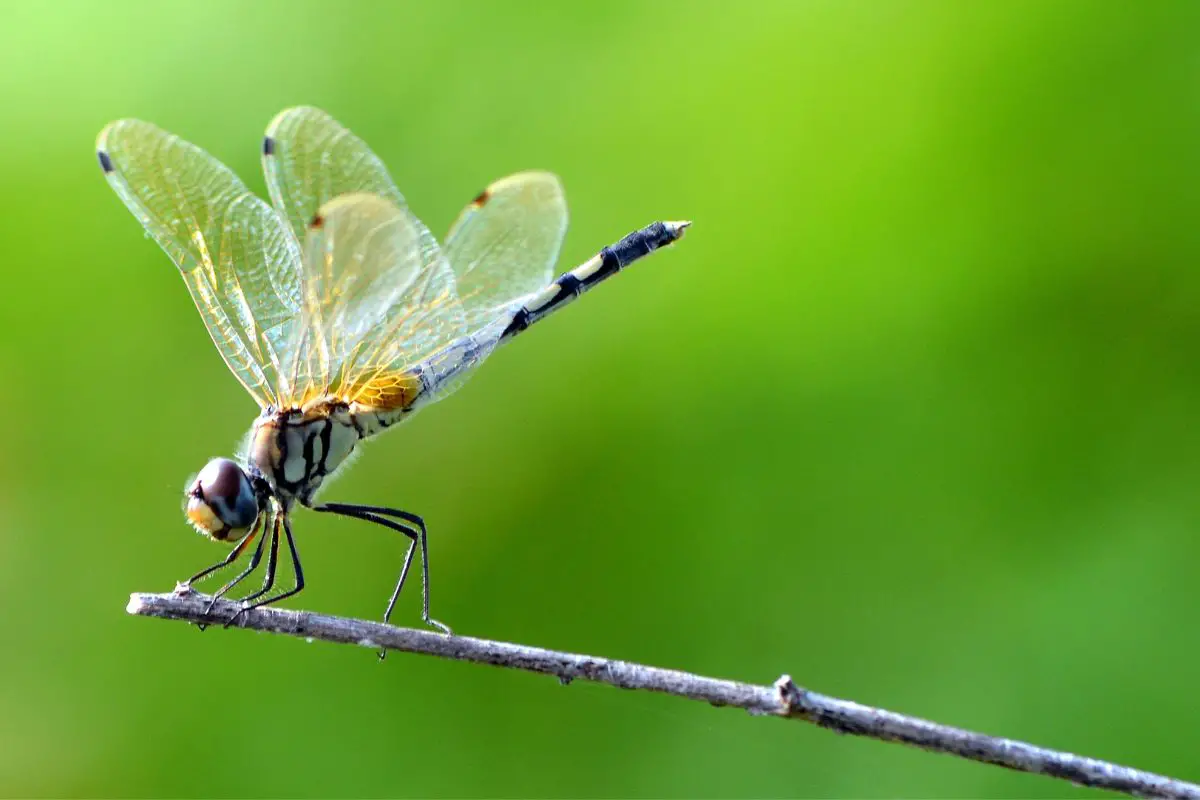
The dragonfly is a beautiful fly and one that is the subject of much folklore, legend, and myth. Some circles consider them to be lucky omens and can bring good wishes or light and love into the homes or gardens they are in. Some religions will even worship them in their own right.
This is a fly that looks much like the mayfly in appearance and structure but is larger than the mayfly measuring between one and four inches in length. It has a long and stick-like body, and it also has wings with large eyes. Its wings are uniquely shaped and larger than its entire body and its big eyes are unmistakeable.
Being a little bigger than the mayfly, they have an advantage when it comes to diet and will eat smaller insects such as the mosquito. They are also known to be the fastest flying insect and can fly as fast as 35 miles per hour.
15. The phorid fly is an insect that appears like the mayfly but is much more annoying
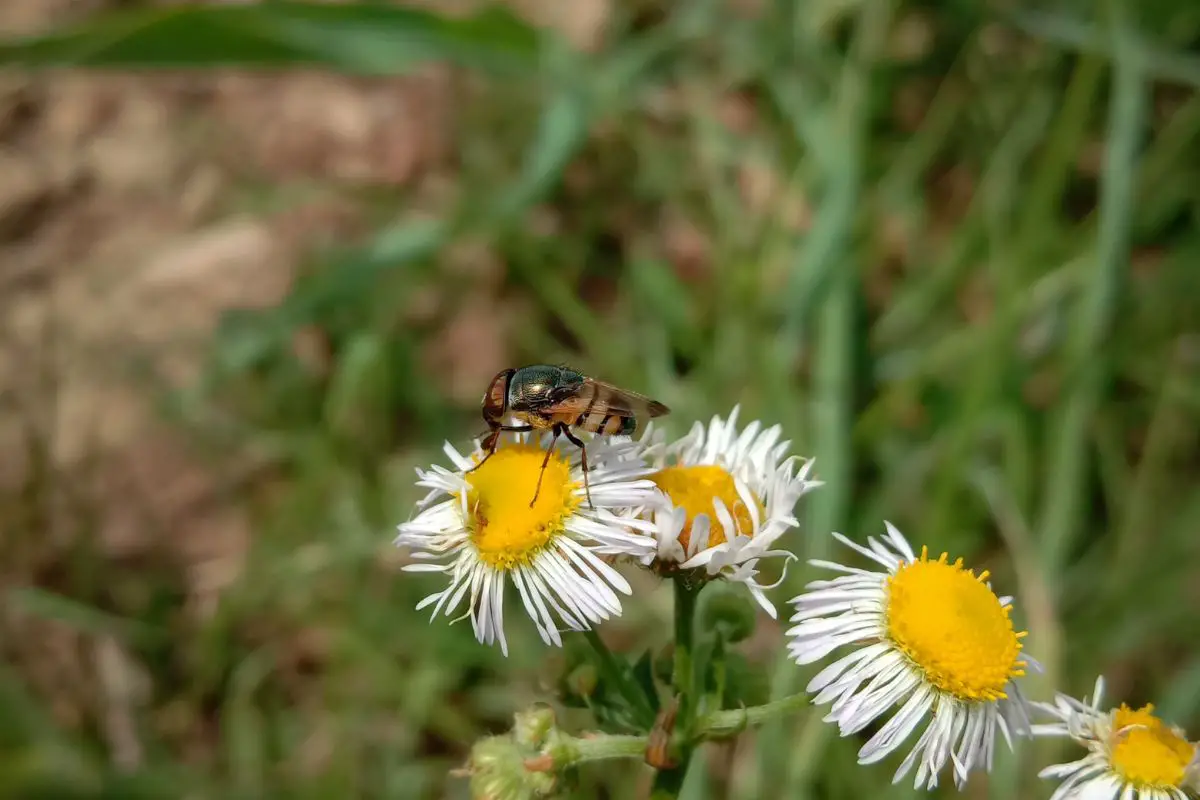
The phorid fly looks much like the mayfly. It is small and brown in appearance and less than one-half an inch long. It is, however, much more annoying and it can be difficult to get rid of.
It also lays eggs as quickly as other flies, as the common house fly can, and the problem can get out of control very quickly. You will see them most often on plant materials and also some food products. They will not appear alone but in large numbers, as their parent flies will lay hundreds of eggs at a time.
From hatching to the completed adult cycle the timeframe can last up to two weeks, with the flight life of only a day or two. You will see these flies in the tropics more than you will see them anywhere else.



